NCERT TEXT BOOK EXERCISES
EXERCISE-14.1
- Copy the figures with punched holes and find the axes of symmetry for the following:
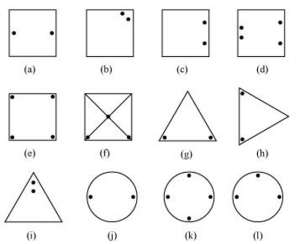
- Given the line(s) of symmetry, find the other hole(s):

- In the following figures, the mirror line (i.e., the line of symmetry) is given as a dotted line. Complete each figure performing reflection in the dotted (mirror) line. (You might perhaps place a mirror along the dotted line and look into the mirror for the image). Are you able to recall the name of the figure you complete?

- The following figures have more than one line of symmetry. Such figures are said to have multiple lines of symmetry.
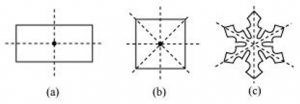
Identify multiple lines of symmetry, if any, in each of the following figures: 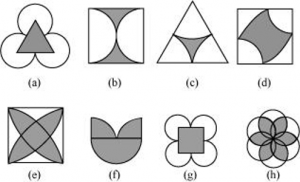
- Copy the figure given here.
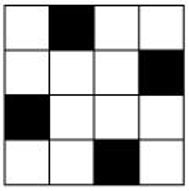
Take any one diagonal as a line of symmetry and shade a few more squares to make the figure symmetric about a diagonal. Is there more than one way to do that? Will the figure be symmetric about both the diagonals?
- Copy the diagram and complete each shape to be symmetric about the mirror line (s):

- State the number of lines of symmetry for the following figures:
(a) An equilateral triangle (b) An isosceles triangle
(c) A scalene triangle (d) A square
(e) A rectangle (f) A rhombus
(g) A parallelogram (h) A quadrilateral
(i) A regular hexagon (j) A circle
- What letters of the English alphabet have reflection symmetry (i.e., symmetry related to mirror reflection) about.
(a) a vertical mirror
(b) a horizontal mirror
(c) both horizontal and vertical mirrors
- Give three examples of shapes with no line of symmetry.
- What other name can you give to the line of symmetry of
(a) an isosceles triangle? (b)a circle?
EXERCISE-14.2
- Which of the following figures have rotational symmetry of order more than 1:

- Give the order of rotational symmetry for each figure:
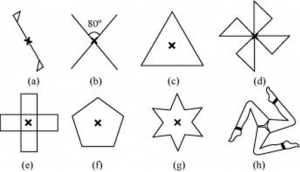
EXERCISE-14.3
- Name any two figures that have both line symmetry and rotational symmetry.
- Draw, wherever possible, a rough sketch of
(i) a triangle with both line and rotational symmetries of order more than 1.
(ii) a triangle with only line symmetry and no rotational symmetry of order more than 1.
(iii) a quadrilateral with a rotational symmetry of order more than 1 but not a line symmetry.
(iv) a quadrilateral with line symmetry but not a rotational symmetry of order more than 1.
- If a figure has two or more lines of symmetry, should it have rotational symmetry of order more than 1?
- Fill in the blanks:
| Shape | Centre of Rotation | Order of Rotation | Angle of Rotation |
| Square | – | – | – |
| Rectangle | – | – | – |
| Rhombus | – | – | – |
| Equilateral Triangle | – | – | – |
| Regular Hexagon | – | – | – |
| Circle | – | – | – |
| Semi-circle | – | – | – |
- Name the quadrilaterals which have both line and rotational symmetry of order more than 1.
- After rotating by 60° about a centre, a figure looks exactly the same as its original position. At what other angles will this happen for the figure?
- Can we have a rotational symmetry of order more than 1 whose angle of rotation is
(i) 45°? (ii) 17°?








